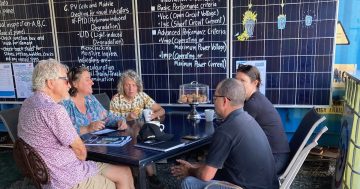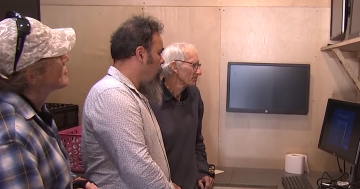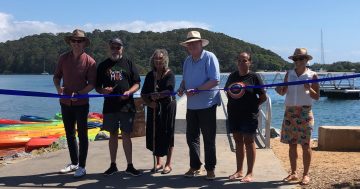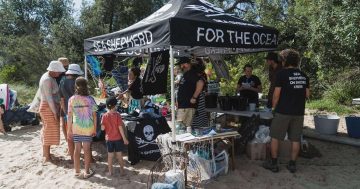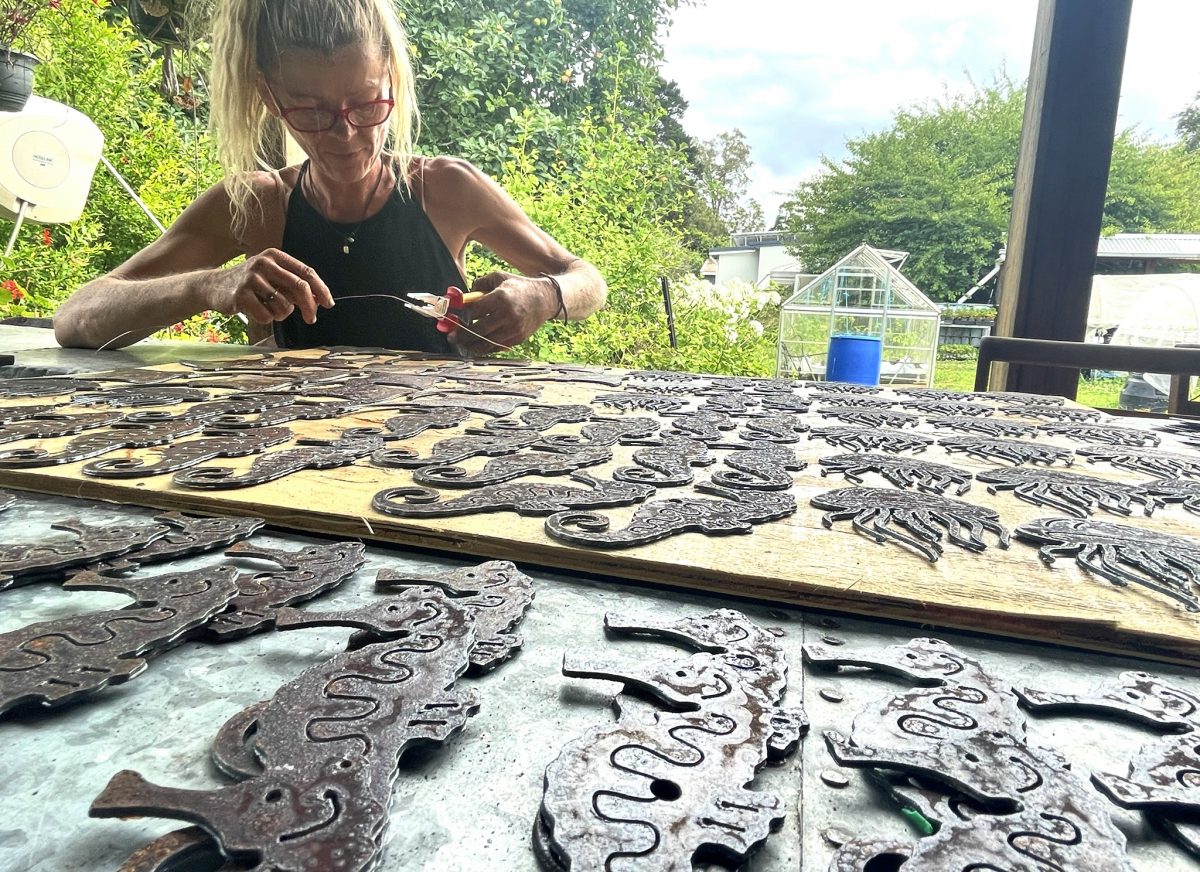
Narooma ‘Mermaid’ Sharyn Cowley preparing the ocean artworks for sale. Photo: RfR.
Instead of going into landfill, flourescent light fittings that were removed from two South Coast CWA halls have been made into artworks that will light up Narooma’s ‘What’s Under the Wharf’ event on 9 January.
Repurposing for Resilience (RfR) Eurobodalla has created a series of marine-themed critters common to the area from light fittings removed from Moruya and Narooma CWA halls during their solar and electrical upgrade works.
RfR president Stephen Cornthwaite said a customised computer numerical control machine put together under the direction of member Ben Tindale of Tindale Systems was used to create the creatures that will be available for sale at the event hosted by the Nature Coast Marine Group (NCMG).
The artworks include grey nurse sharks, jellyfish, stingrays and seahorses cut out of the old light fittings.
Proceeds from the sale of the pieces will go towards assisting the NCMG in its efforts to ensure the unique local biodiversity is preserved during the redevelopment of the old wharf by Transport for NSW (TfNSW).
The free event will be held from 11 am until 1 pm, and residents can go along and discover what’s lurking in the underwater world beneath the Narooma Wharf and learn some fascinating facts about these creatures and their habitat from the experts.
NCMG members, Batemans Marine Park staff and Eurobodalla Council’s sustainability team will be available to share their knowledge and answer questions.
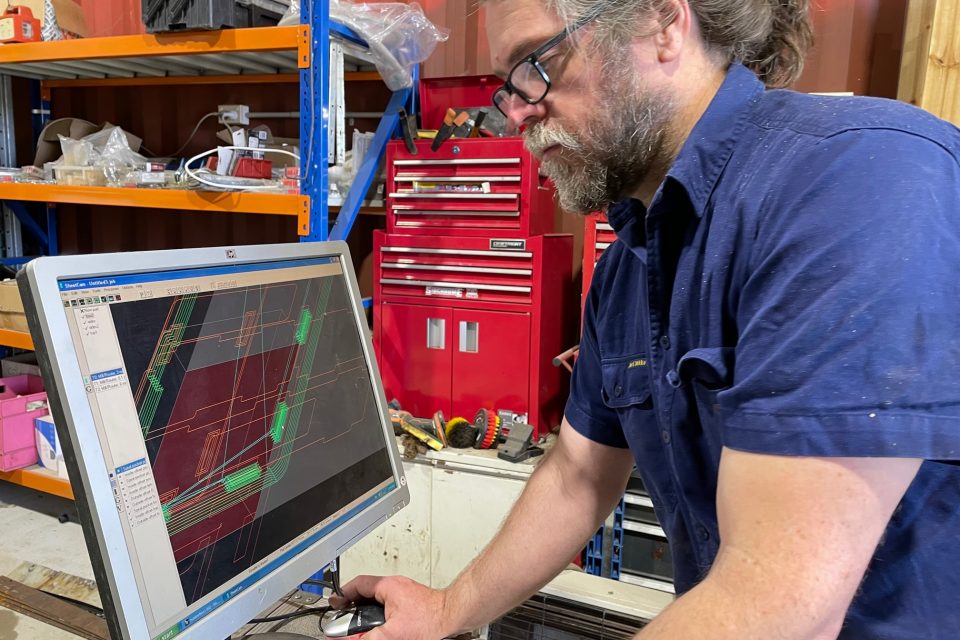
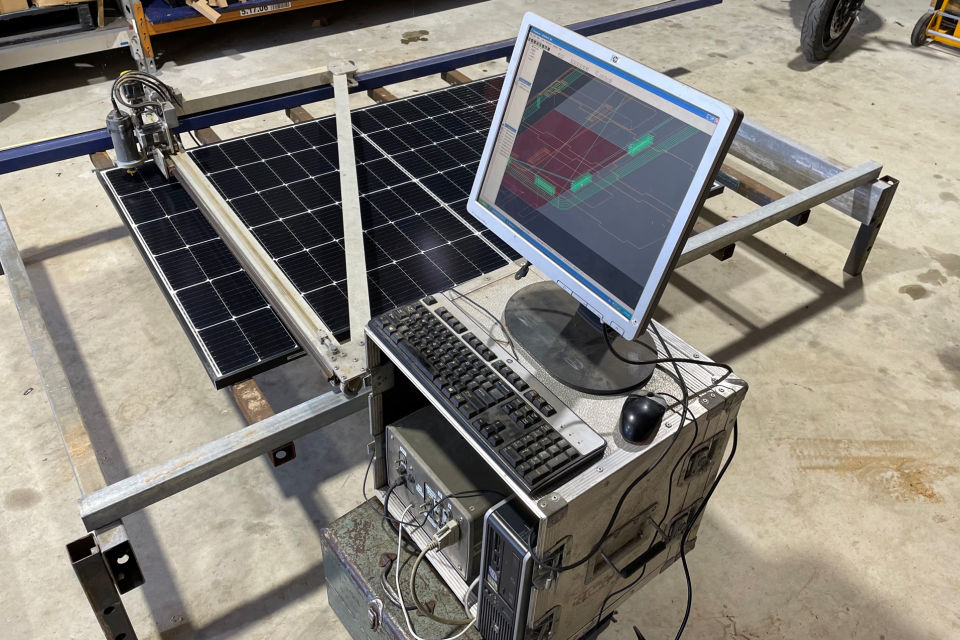
Established in 2022 as a not-for-profit incorporated association, RfR is championing the reuse and repurposing of solar panels and associated industry e-waste in the region.
To address the lack of any competent industry exit plan for this kind of waste, Mr Cornthwaite says the small but innovative group is tackling the issue, reducing landfill, creating industry and working towards a circular economy.
RfR is part of a much larger movement committed to finding solutions to problems created by the ‘throw-away economy’.
“We’re focusing primarily – but not exclusively – on the solar PV industry,” Mr Cornthwaite said.
“The irony is that, despite its motivating impetus to be part of an environmental solution, growth in the solar PV industry creates a landfill burden from still-functioning equipment.
“To maintain integrity of purpose, solar panels must be able to pay back the embedded environmental deficit involved with manufacture and implementation with a minimum number of years in service.”
Mr Cornthwaite says sending a working solar panel to landfill or an industrial materials recycling plant makes the resultant environmental deficit larger.
“Although our primary motivator is dealing with solar industry waste, our commitment to contributing parochially means we’re becoming involved in a wider area of interest as we develop methodologies, processes and local networks here in the Eurobodalla,” he added.
Worldwide Fund for Nature (WWF) Innovate to Regenerate funding will assist RfR to operate over a two-year pilot, proving feasibility for the initiative at a grassroots level.

The aging Narooma Wharf will be replaced. Photo: Transport for NSW.
During 2023, with council support, RfR hopes to establish a presence at the Moruya transfer station, where PV panels and associated components can be dropped off free of charge, to be tested, processed, and stored ready for reuse or repurposing.
Mr Cornthwaite said an essential part of the program included the establishment of a local training facility and a publicly accessible shop front venue to hold a series of exhibitions, workshops and training events.
RfR also aims to bring nationally recognised, accredited training courses to the local community. Eurobodalla residents currently have to travel to Canberra, Sydney or Nowra for mandatory industry training.
To find out more or join the organisation visit www.rfreurobodalla.com.au







